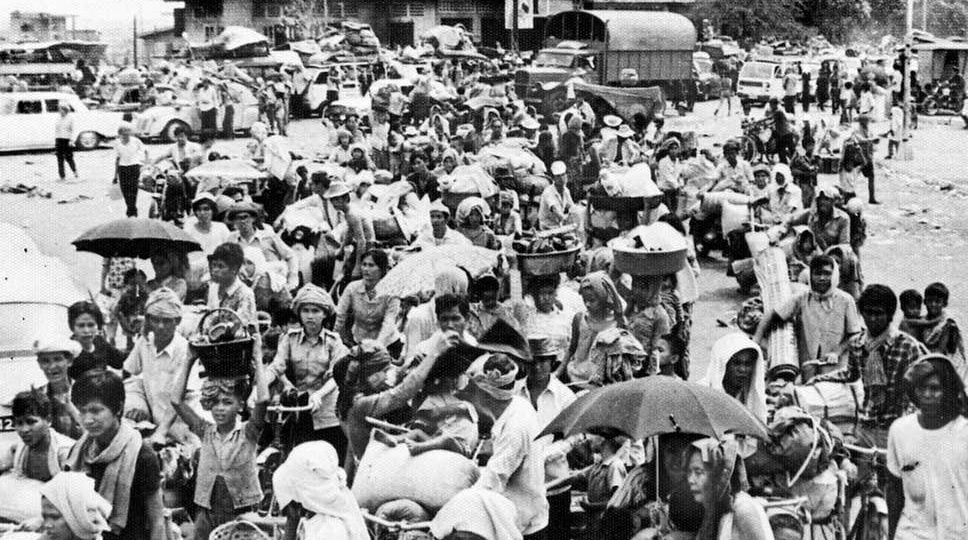Unlike the history of the Angkor Wat kingdom which survived for centuries, the history of Pol Pot and the Khmer Rouge reign of terror only lasted a few years…
They firstly built up in the 1960s in the jungle during the American War in Vietnam.
After neutral Cambodia was bombed with 2.7 million tons of U.S. bombs that killed 500,000 back into the stone age almost, during the American War Pol Pot came into power after a short civil war when he overtook Phnom Penh in 1975:
- He had one of the most radical ideas for a revolution in history
- He renamed the country Kampuchea
- He wanted to rid the country of the entire past after taking over Phnom Penh
- So they declared it year zero and set about creating a peasant dominated agrarian society
The Khmer Rouge regime was highly autocratic, xenophobic, paranoid and repressive. The genocide was in part the result of the regime’s social engineering policies. Its attempts at agricultural reform through collectivization led to widespread famine, (spiders became one of the popular survival foods), while its insistence on absolute self-sufficiency even in the supply of medicine led to the death of many thousands from treatable diseases such as malaria. The Khmer Rouge’s racist emphasis on national purity included several genocides of Cambodian minorities. Arbitrary executions and torture were carried out by its cadres against perceived subversive elements, or during genocidal purges of its own ranks between 1975 and 1978.
They immediately abolished currency and postal services and executed all previous government and other professionals while at the same time sending millions to work in slave-like conditions in the fields, immediately executing anyone who resisted. They wanted to cut off all contact with the outside world This short reign of horrors saw almost 2 million deaths or 25% of the population before the Vietnamese defeated them while the rest of the world had looked on.
The regime was removed from power in 1979 when Vietnam entered Cambodia and quickly destroyed most of the Khmer Rouge’s forces. The Khmer Rouge then fled to Thailand, whose government saw them as a buffer force against the Communist Vietnamese. The United States and China and their allies, notably the Thatcher government, backed Pol Pot in exile in Thailand, providing the Khmers with intelligence, food, weapons and military training. The Khmer Rouge continued to fight the Vietnamese and the new People’s Republic of Kampuchea government during the Cambodian–Vietnamese War which ended in 1989.
Pol Pot himself was born in 1925 and passed away in 1997. His real name was Saloth Sar.
He was educated at the most elite Cambodian schools before leaving for Paris where he joined the French Communist Party and adopted his Marxist-Leninist ideology.
He returned to Cambodia in 1953 working as a teacher. Over the years he helped develop the Kampuchea Communist Party and eventually, backed by some foreign governments including the U.S. & U.K. started a war against the central government, taking over in 1975 and the rest is history.
Not for the faint-hearted today are the “TOURIST ATTRACTIONS” of the killing fields of Choeung Ek and the even more disturbing Tuol Sleng Museum, (S24), of genocidal crimes.
For those not up to these things, Phnom Penh has numerous other more palatable attractions such as the Silver Pagoda complex and the National Museum which houses some amazing centuries-old relics.
Phnom Penh was once known as the Paris Of The East. So like in many parts of the country the French era architecture can still be seen today.
Again like pub street in Siem Reap, Sisowath Quay will cool you down with happy hour riverside as you reflect on the history of the Khmer Rouge, at the end of the day.




